
By Denise Gee Peacock
Lieutenant Chris O’Keefe of the Tulsa, Oklahoma, Police Department (TPD) has a handful of cameo appearances in the reality-crime TV series “The First 48.” But off screen, the real-life search for bad actors and innocent victims has been his calling for several decades.
Much of O’Keefe’s 24-year TPD career has focused on the rapid identification and apprehension of homicide suspects and other violent criminals, most recently in the TPD’s Fugitive Warrants Unit. In April 2023 he began supervising the TPD’s Sex and Violent Offender Registration Unit, where he also serves as AMBER Alert Coordinator (AAC). As AAC, O’Keefe weighs missing child-related factors as they are known before deciding whether to contact Jason Matheson of the Oklahoma Highway Patrol to initiate an AMBER Alert in partnership with the Oklahoma State Bureau of Investigation.
We met the De Pere, Wisconsin, native at this year’s AMBER Alert and AMBER Alert in Indian Country Symposium in Washington, D.C. We reconnected with him in Tulsa to discuss his work.
What led you into law enforcement?
I knew I wanted to get into public service, something to help people on a daily basis. Maybe I just read too many superhero comic books as a kid. But after getting a B.A. in sociology from St. Norbert College in De Pere, I did some law enforcement training at Fox Valley Technical College (FVTC) in Appleton before joining the U.S. Army. Then, when my wife was offered a job in Tulsa, I tapped into my FVTC training and Army experience to sign up for the TPD academy. I joined the organization in 2001.


 TACTICAL TIP
TACTICAL TIP
“The U.S. Marshals are a great resource,” says O’Keefe, who has served on several U.S. Marshals Service (USMS) task forces. “At the recent [National AMBER Alert and AMBER Alert in Indian Country] symposium, Bill Boldin explained how they’re using their fugitive-search skills to find missing children. I hope people use them more. They’re always quick to offer their help to us, especially when we lack resources to conduct out-of-state investigations.”
How does being an AAC mesh with the other work you do for the TPD?
It’s a natural fit. An AMBER Alert is essentially a manhunt, and I’ve developed an expertise in finding people. Now I oversee the process after countless directives to “Go, go, go—find them!” I also manage the sex offender registration process, and those are the individuals we look at right away whenever there’s a missing child case.
How many AMBER Alerts do you issue on average?
In the last two years, we’ve issued about six AMBER Alerts. But I couldn’t even begin to count the number of times we’ve discussed if a missing child case should warrant an AMBER Alert, or an Endangered Missing Alert, or be addressed some other way.
What are your biggest challenges?
One involves a perception that if we don’t issue an alert, we’re ignoring the situation. But truth is, we bring plenty of resources to bear to find a child. This was a topic of conversation at the recent AMBER Alert and AMBER Alert in Indian Country Symposium. There’s a lot we can do if a case doesn’t meet our criteria—issue social media posts, work with license plate readers, ping a cell phone. The case can get resolved even quicker if we have solid information to work with right away.
What guides your ultimate decision?
I go by informed instinct, combining that with what I hear from people on the front lines—particularly the responding officers or in some cases our dispatchers, digging into what their first impression of the situation is, and whether they believe the child to be in danger. That’s why first-responder training is essential.
Do you enlist a child abduction response team (CART)?
We have a call tree of people on our incident management team (IMT) who are paged during an AMBER Alert or Endangered Missing situation, and the IMT includes a crisis unit that focuses on child molestation cases. They’re truly an organizational force. We have an AMBER Alert Center within our headquarters and the IMT will use it as its command post, manning the phones, sorting through tips, procuring resources. All the tips flow through me and I decide the priority of them. We then keep track of who we’ve sent where to check out the tip, and I organize all that. We also try to keep the family as close as possible and have a victim advocate on hand.
What types of missing child cases are the most complex?
Stranger abductions—the real nightmare ones, with no information on vehicles or suspects—are thankfully very rare. Parental abductions are the most common—and complicated. Generally, a parent can’t abduct their child if they have the legal right to be with that child, whether all the time or just some of the time. It’s only when the parent says they’re going to go harm themselves and/or the child that we immediately know it warrants an AMBER Alert.
What helps you navigate such complexities?
If there’s even a chance that a parent could hurt the child, we’ll err on the side of caution and issue an AMBER Alert. The challenge lies within the legalities. We worry about unleashing the full force of law enforcement on a parent who hasn’t committed any crime. That can result in liability issues. And that’s where our training and experience have to come into play—and asking the right questions.
Being an AAC is stressful work. What motivates or inspires you?
The times we’ve had AMBER Alerts I’m never short of help. It’s not just from the people on call; we see that every patrol officer is going to stop what they’re doing to help find the child. I also get calls from the regional sheriff’s department, Oklahoma Highway Patrol, FBI, and the U.S. Marshals. It’s amazing. I’m also grateful to have a family that’s been supportive of my work.

Parental abductions are the most common and complex. We have to be careful with custody disputes—unless the parent indicates he might hurt the child. At that point, an AMBER Alert is clear.


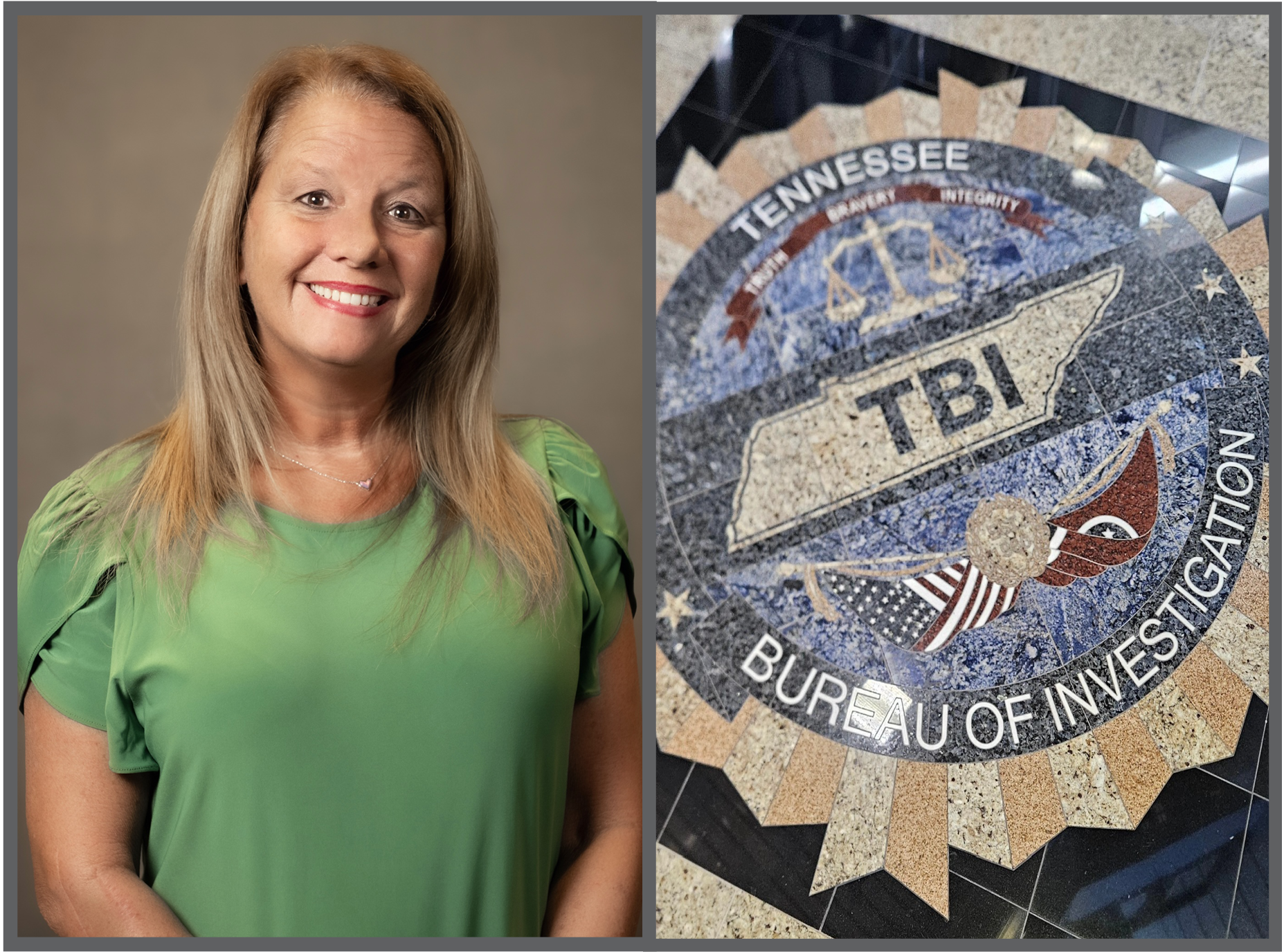
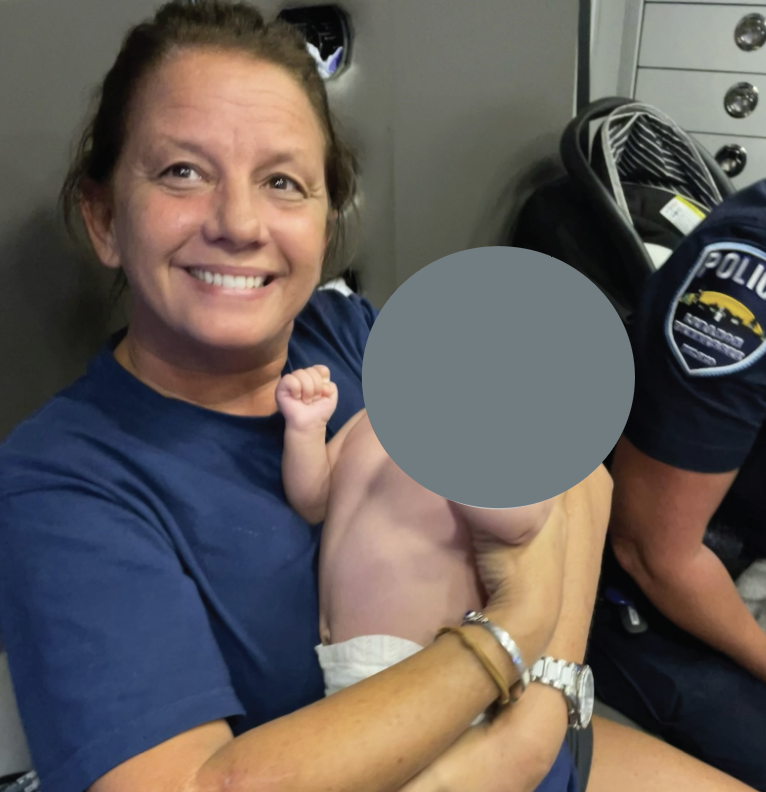


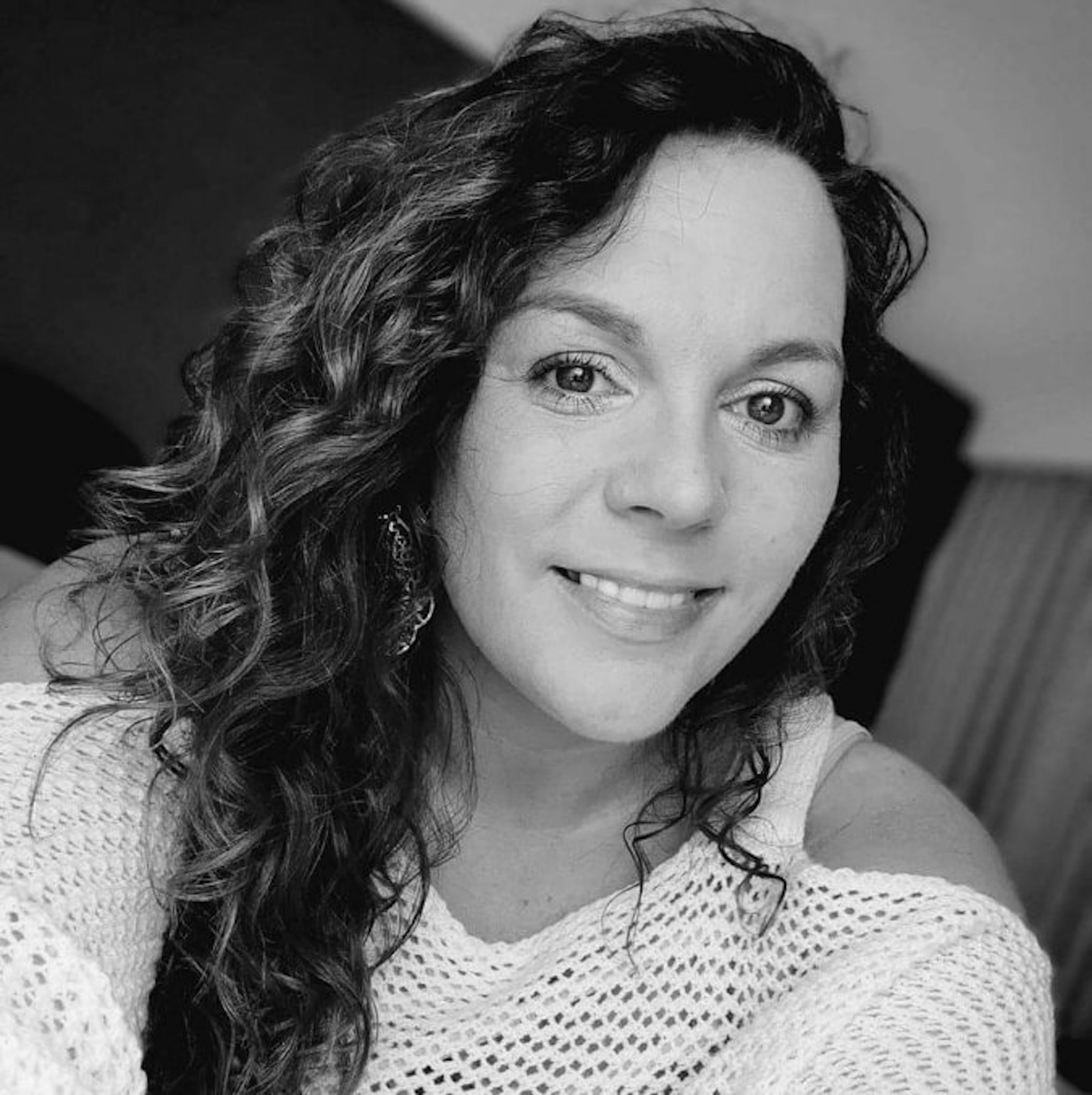
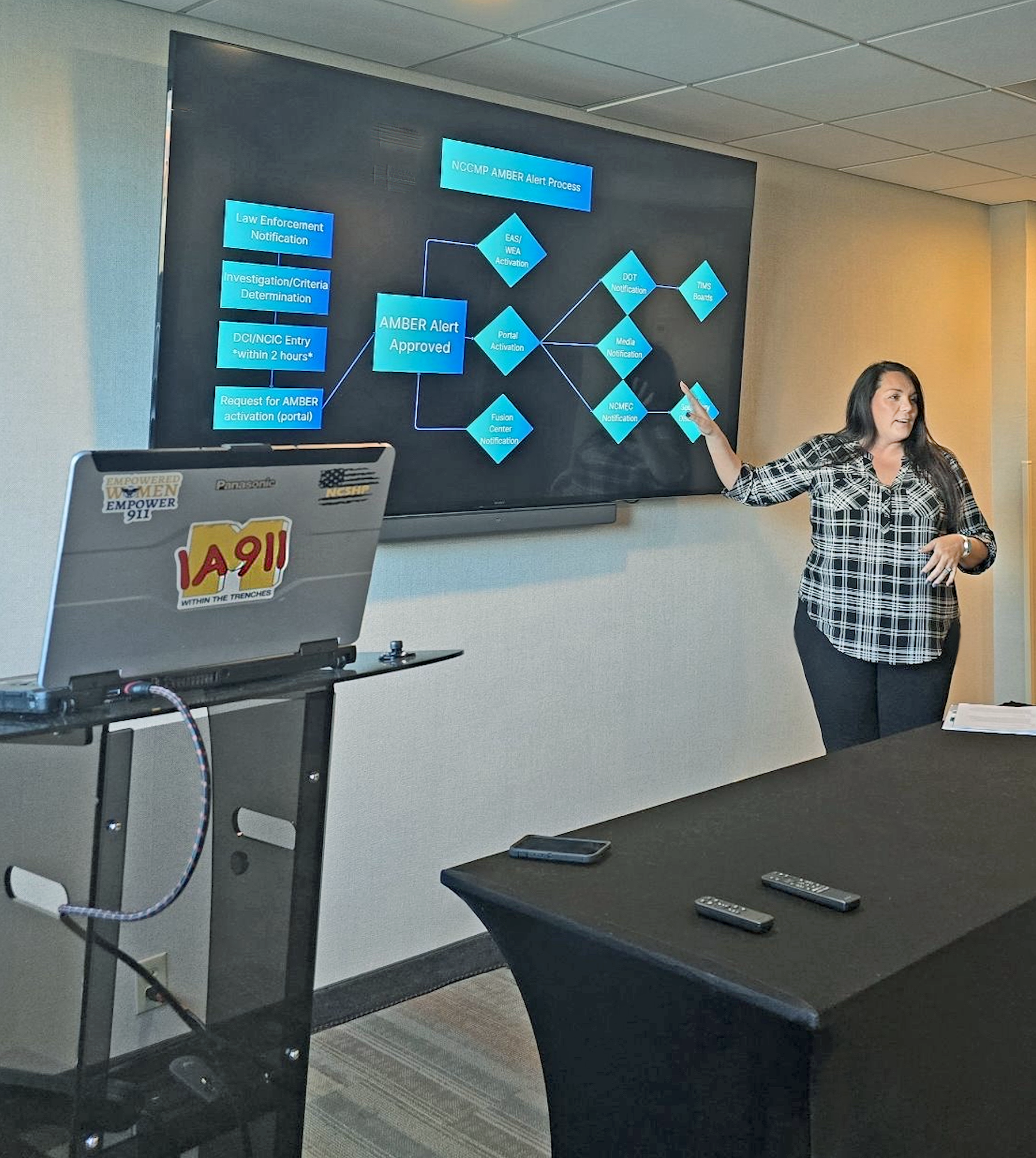

 AATTAP’s course, 911 Telecommunicators and Missing & Abducted Children (“911 T-MAC,” for short) is essential not only for law enforcement and public safety telecommunicators but also for any members of law enforcement and support staff who address public calls for help.
AATTAP’s course, 911 Telecommunicators and Missing & Abducted Children (“911 T-MAC,” for short) is essential not only for law enforcement and public safety telecommunicators but also for any members of law enforcement and support staff who address public calls for help.
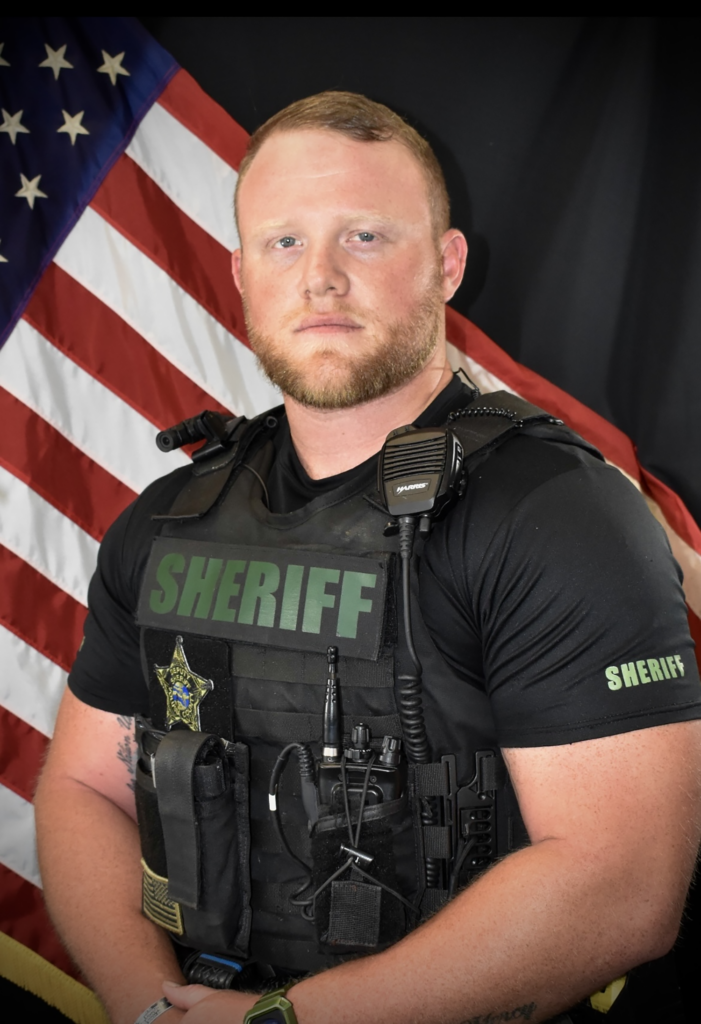
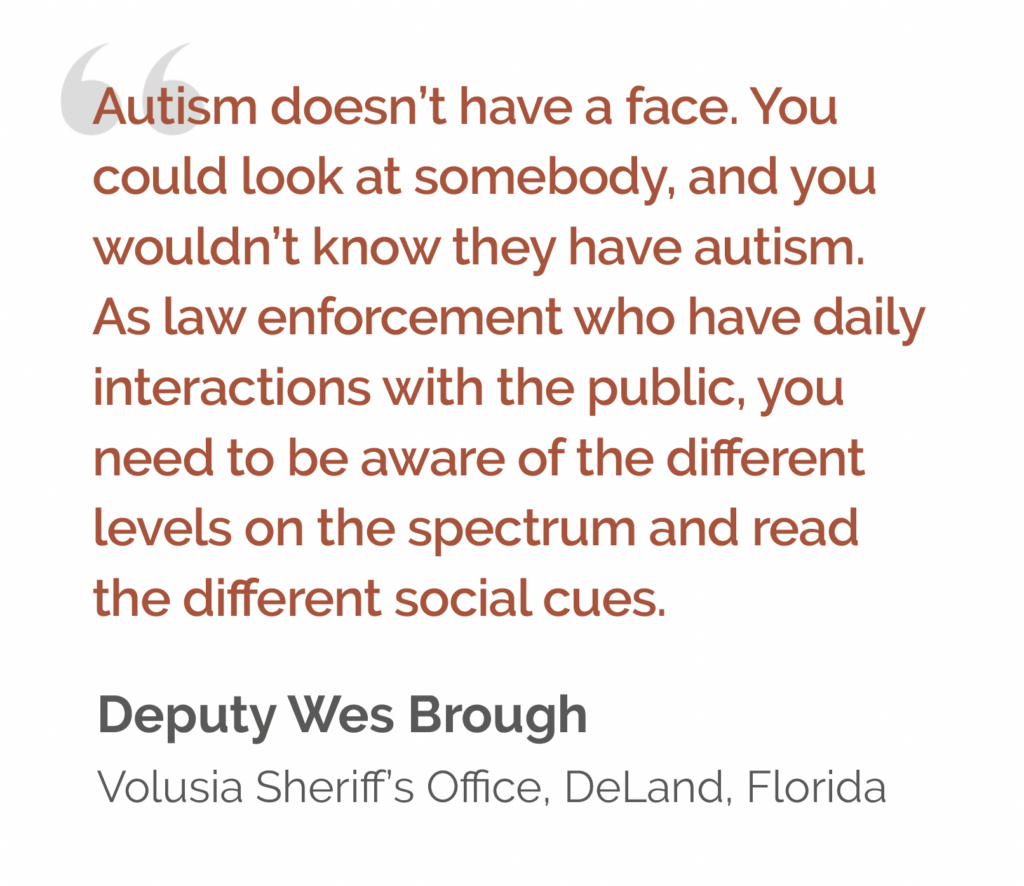 Brough was first on the scene, followed shortly by another officer who helped search the family’s house to confirm the boy wasn’t there. Dispatched officers soon arrived and the search area expanded.
Brough was first on the scene, followed shortly by another officer who helped search the family’s house to confirm the boy wasn’t there. Dispatched officers soon arrived and the search area expanded.![SIDEBAR with headline "4 tips: Be in the know about autism" [TEXT] Children with autism spectrum disorder (ASD) wander or go missing at a higher rate than other children—a behavior known as elopement. They may be trying to get away from loud sounds or stimuli, or seeking out places of special interest that pique their curiosities. The National Autism Association (NAA) shares the following tips all first responders should know. • Know the signs: A person with autism may have an impaired sense of danger, and, as such, may wander into water, traffic, or other perils. They may not speak or respond to their name, and may appear deaf. They need time to process questions, may repeat phrases, and may try to run away or hide. And they may rock, pace, spin, or flap their hands. • Know how to search: Act quickly and treat the case as critical since a child with autism may head straight to a source of danger, such as water, traffic, or an abandoned vehicle. First search any nearby body of water, even if the child is thought to fear it. Ask about the child’s likes and dislikes, including potential fears such as search dogs or siren sounds. • Know how to interact: Don’t assume a person with autism will respond to “stop” or other commands or questions. If they’re not in danger, allow space and avoid touching. Get on the child’s level and speak in a reassuring tone, using simple phrases—even if the person is nonverbal. Offering a phone to a nonverbal person to communicate via typing may be helpful. • Know about resources: Beyond agency training, law enforcement officers can find online resources. The National Autism Association offers a downloadable brochure with tips for first responders on its website. Additionally, the National Center for Missing & Exploited Children also offers excellent online resources (visit missingkids.org).](https://amberadvocate.org/wp-content/uploads/2024/10/AA60-sidebar-autism-1.png)
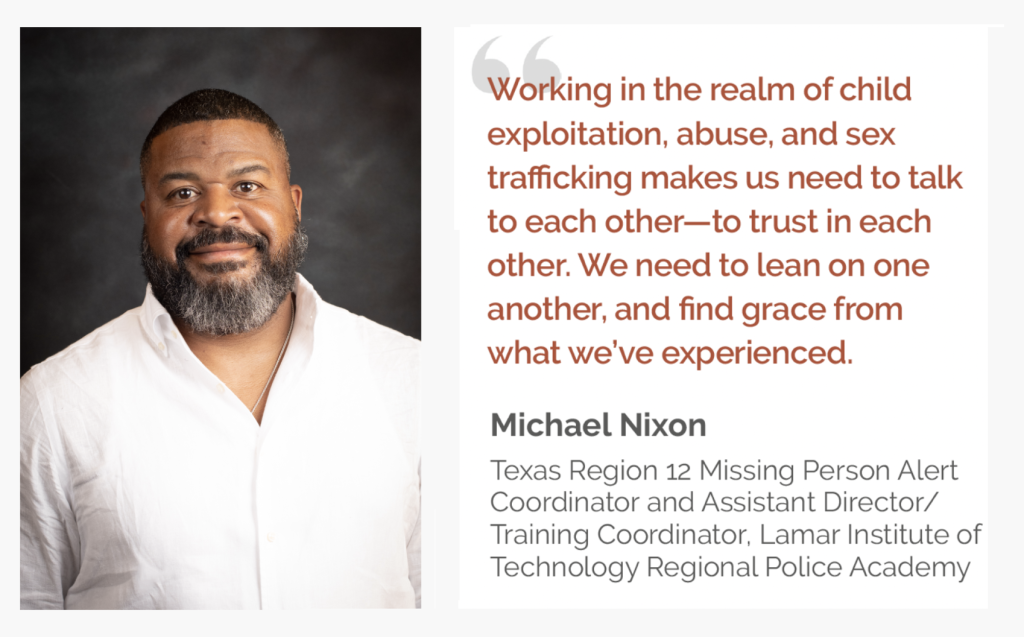
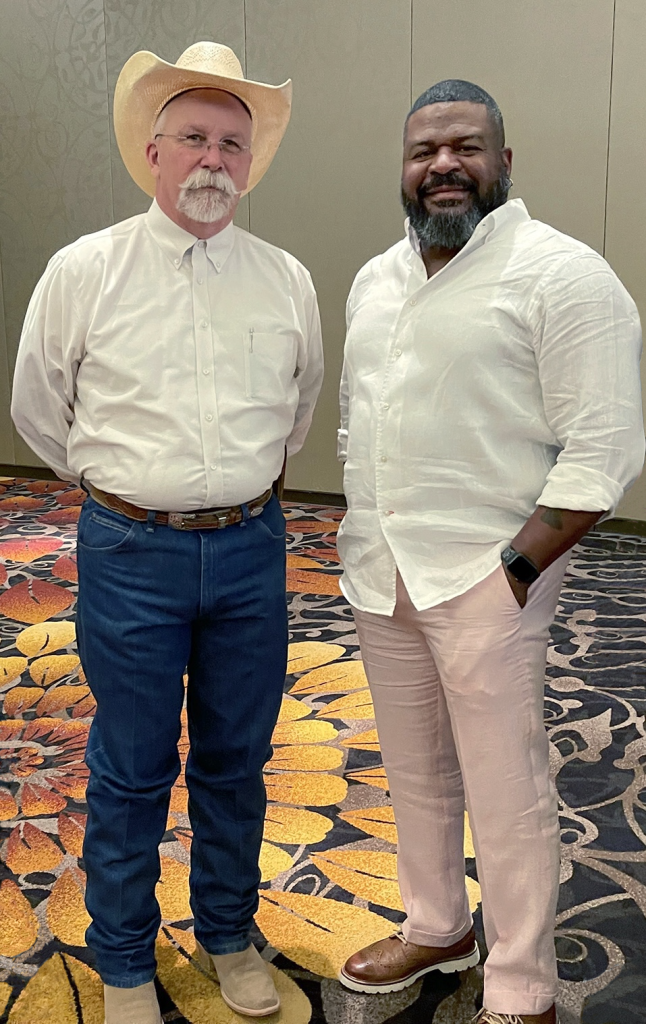
 Share your feelings with a trusted friend or professional.
Share your feelings with a trusted friend or professional. 
 What has prepared you for the position?
What has prepared you for the position?


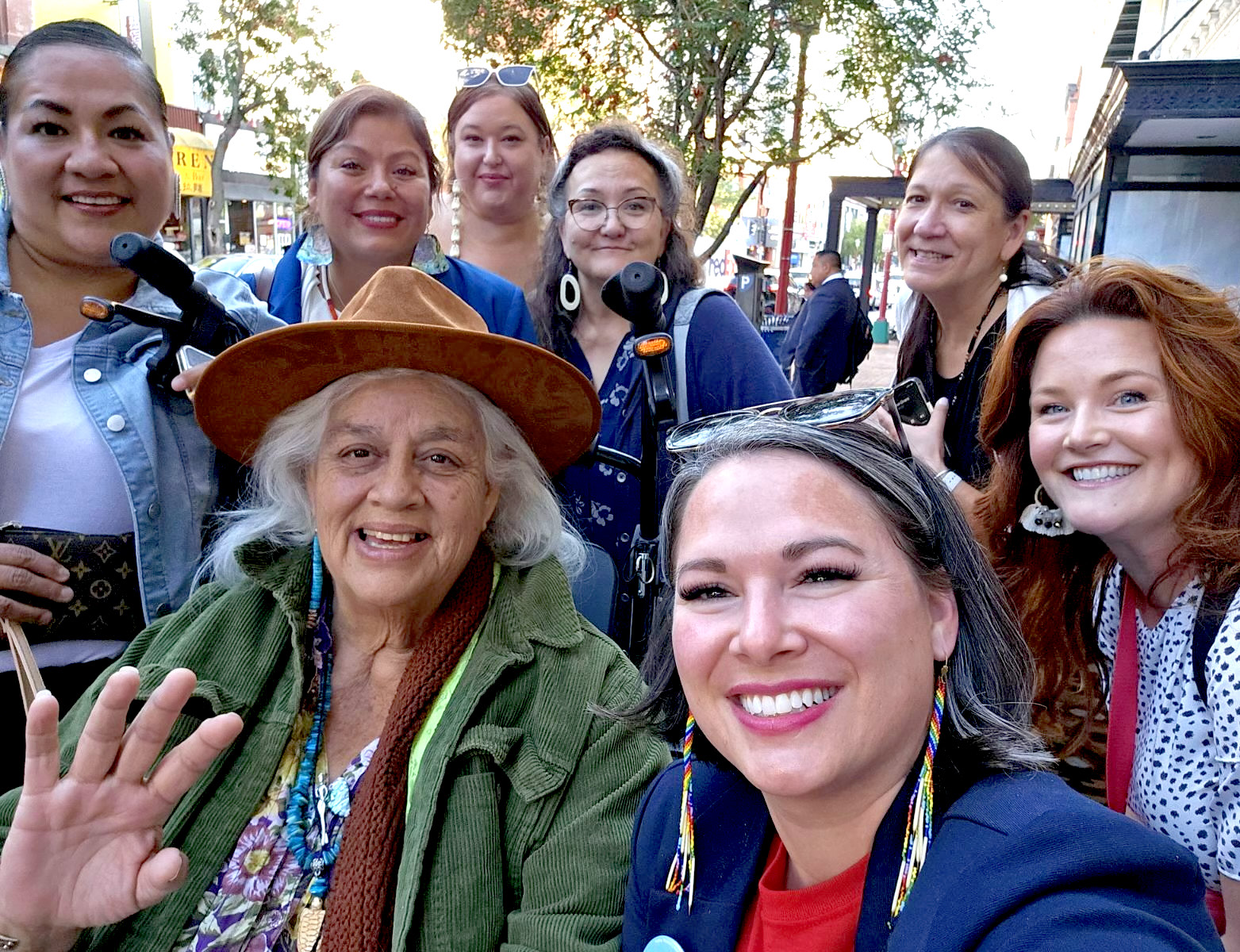
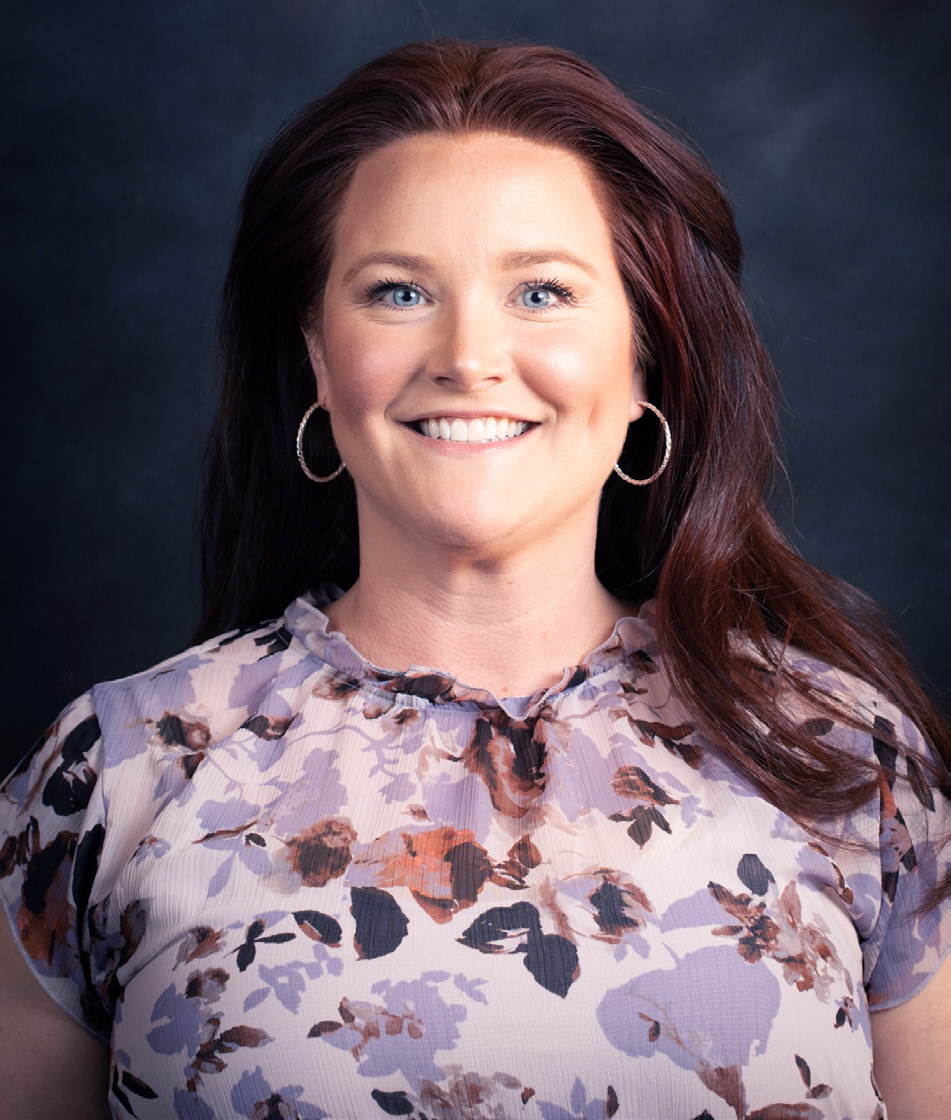
![Information sidebar: Not Invisible Act: Key findings Jolene Hardesty shares thoughts from her Not Invisible Act Commission work. Resources are desperately needed. “We heard testimony from an Alaska Native woman whose sister was murdered in her home—and she lay dead on the floor for three days because no police came to investigate,” Hardesty says. “There are also villages in Alaska that don’t have a fire department; villages that take a State Trooper three days by airplane to reach; and villages where Tribes don’t have a police department—or if they do, officers are not staffed 24/7. These departments lack the funding, resources, people, or skill sets to have an appropriate response, much less an immediate one.” Jurisdiction can be a problematic puzzle. In Oklahoma, where nearly half the land is Tribal owned, “you have a checkerboard of different Tribes, and criminal jurisdiction isn’t clear,” she says. For instance, a crime that happens on the northwest quadrant of a street may be the responsibility of a different Tribe than one on the southwest quadrant. And if the crime is murder, another jurisdiction may need to be involved. “Keeping up with the matrix needed to determine who’s going to respond to a crime can be overwhelming,” she says. Justice is often meted out differently. “Tribal law enforcement and courts are limited in what they can do [and often include social-rehabilitation measures]. If a murder occurs on Indian land, the most jail time imposed [may be] nine years,” Hardesty says.](https://amberadvocate.org/wp-content/uploads/2024/04/16b-Key-Findings.png) How does the way data is collected present a problem?
How does the way data is collected present a problem?








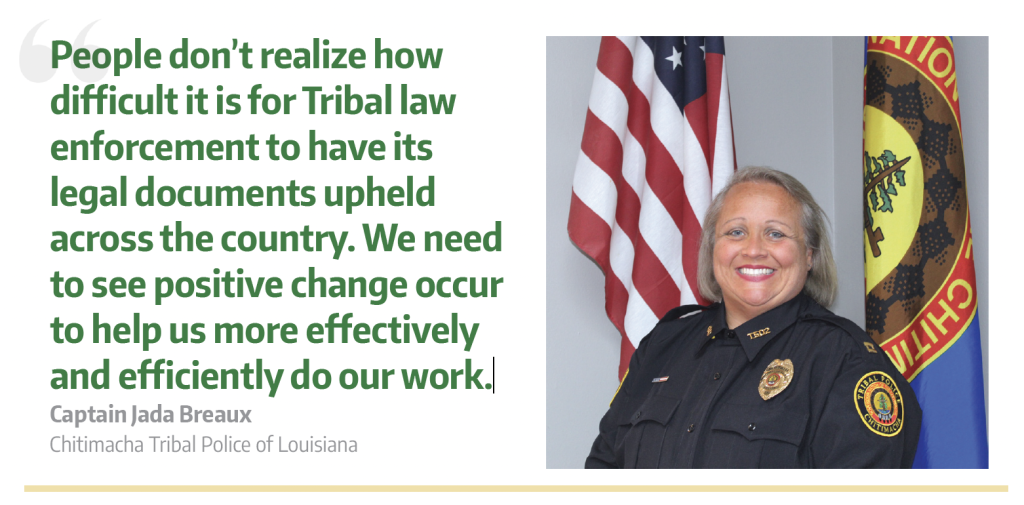
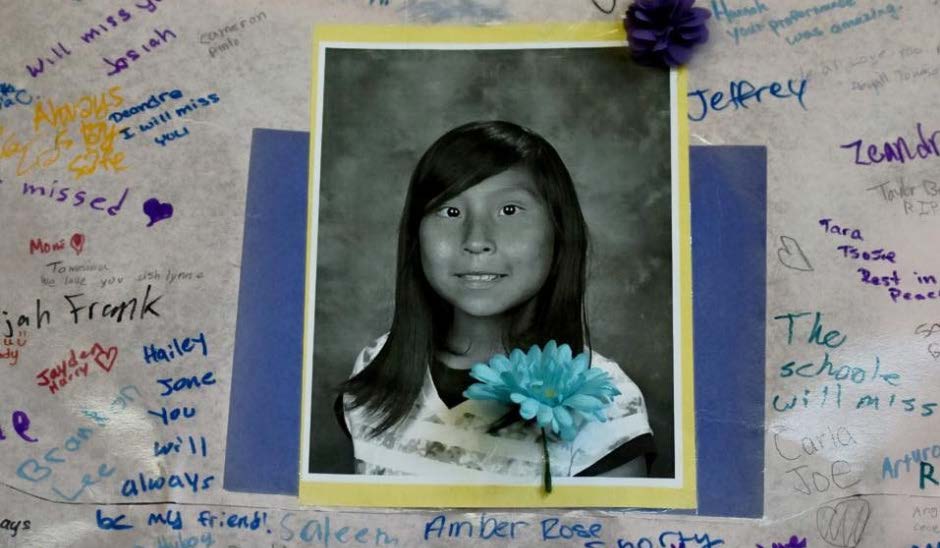
 By Rebecca Sherman
By Rebecca Sherman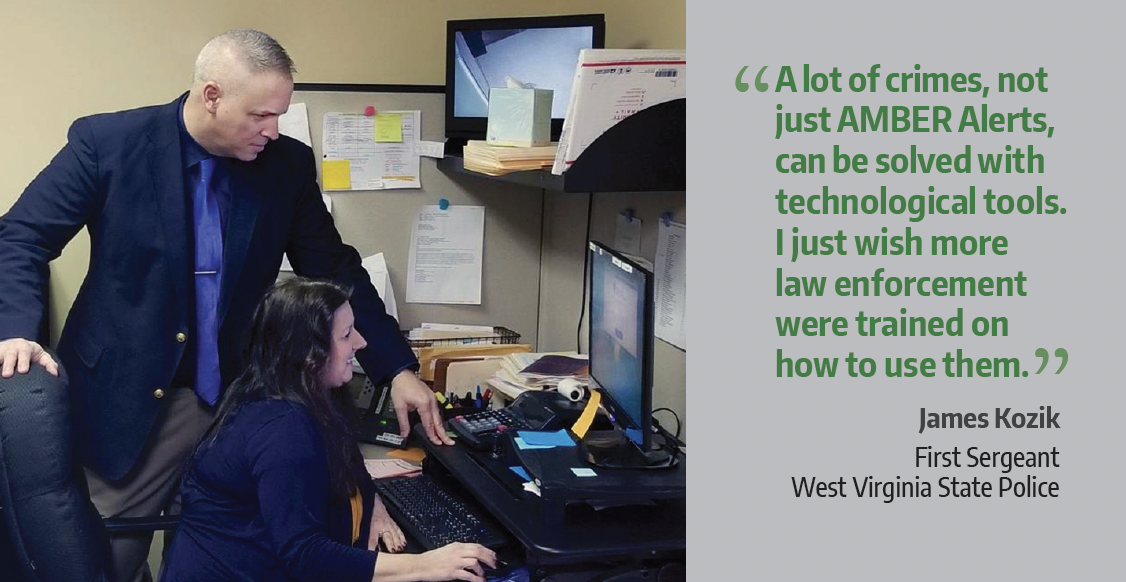 Though he no longer investigates cases himself, Kozik works closely with law enforcement agencies throughout West Virginia when a child goes missing. “I’m the one who gets called in the middle of the night to find out whether an AMBER Alert can be activated or not,” he says. He also triages cases from NCMEC, a heartbreaking job sometimes requiring him to watch unspeakable videos of child abuse. “I just want to reach through the screen and help those kids,” he says.
Though he no longer investigates cases himself, Kozik works closely with law enforcement agencies throughout West Virginia when a child goes missing. “I’m the one who gets called in the middle of the night to find out whether an AMBER Alert can be activated or not,” he says. He also triages cases from NCMEC, a heartbreaking job sometimes requiring him to watch unspeakable videos of child abuse. “I just want to reach through the screen and help those kids,” he says.